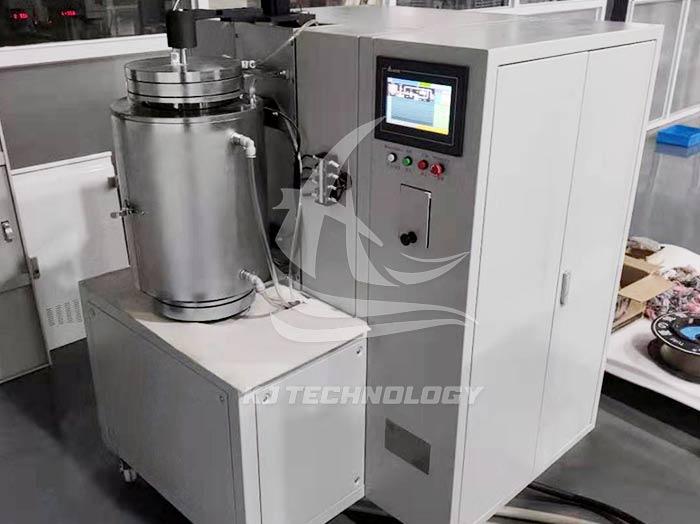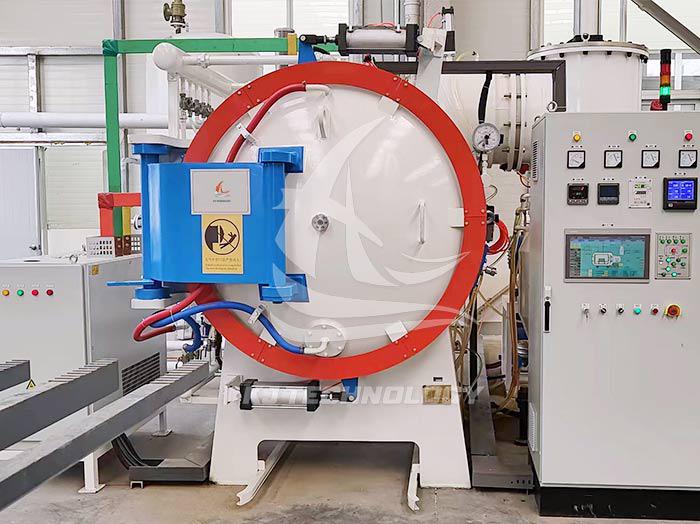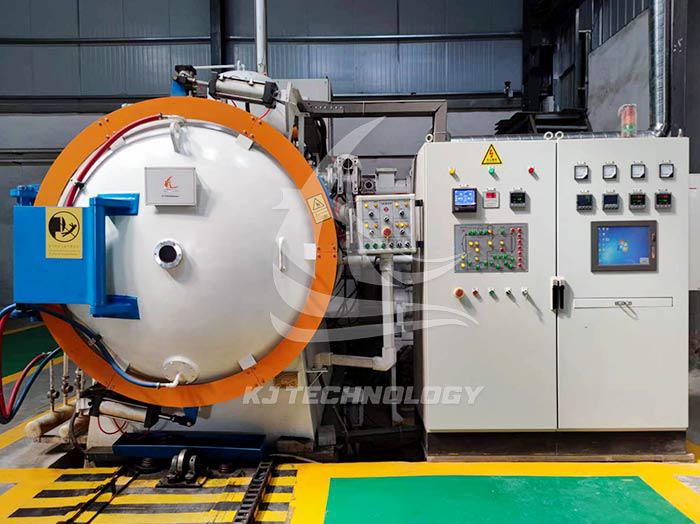Vacuum furnace metal annealing
 10-10-2025 Author: KJ technology
10-10-2025 Author: KJ technology
Vacuum furnace metal annealing is a heat treatment process carried out in a vacuum or protective atmosphere environment, aimed at achieving non oxidative annealing of metal materials by isolating oxygen, while improving the mechanical, physical, and processing properties of the materials. The following provides a detailed introduction from five aspects: principles, equipment, processes, applications, and advantages:
Principle
Vacuum furnace metal annealing is based on the scientific principles of heat transfer and material phase transition. In a vacuum environment, metal materials are uniformly heated to a predetermined temperature, and the atoms inside the material gain sufficient energy to undergo microstructural changes such as diffusion and recombination. This process helps to eliminate residual stresses inside the material, improve the crystal structure, and enhance the plasticity and toughness of the material. Meanwhile, a vacuum environment can effectively prevent metals from reacting with harmful gases such as oxygen and nitrogen at high temperatures, thereby reducing the occurrence of surface oxidation, decarburization, and other defects.
Equipment
The vacuum furnace metal annealing equipment mainly consists of vacuum furnace, heating system, vacuum system, cooling system, control system and other parts. Among them, the vacuum furnace is a key equipment for achieving vacuum annealing, and its performance directly affects the annealing effect. According to their structural form, vacuum furnaces can be divided into two types: vertical furnaces and horizontal furnaces. Vertical furnaces have a small footprint and are suitable for places with limited space; Horizontal furnaces have a larger processing capacity and are suitable for large-scale production. In addition, according to different heating methods, vacuum furnaces can be divided into electric induction heating furnaces and resistance heating furnaces. Electric induction heating furnace uses the principle of electromagnetic induction to generate heat inside the workpiece, with fast heating speed and high energy utilization efficiency; The resistance heating furnace is heated by the heat generated by the resistance wire or resistance furnace core, and has the characteristics of simple structure and convenient operation.
Workmanship
The process of metal annealing in a vacuum furnace usually includes steps such as loading, vacuuming, heating, insulation, cooling, and exiting the furnace. Before loading the furnace, it is necessary to clean the metal materials to remove impurities such as oil stains and oxides on the surface. Then, load the metal material into the vacuum furnace and close the furnace door. Next, start the vacuum system to reduce the pressure inside the furnace to the required vacuum level. In a vacuum environment, start the heating system to uniformly heat the metal material to the predetermined temperature and maintain it for a period of time for insulation treatment. After the insulation is completed, choose a suitable cooling method (such as air cooling, oil cooling, etc.) according to the process requirements for cooling. Finally, when the temperature inside the furnace drops to a safe range, open the furnace door and remove the metal material.
Application
Vacuum furnace metal annealing technology is widely used in high-end manufacturing fields such as aerospace, automotive manufacturing, mechanical manufacturing, electronic appliances, medical equipment, etc. For example:
Aerospace field: Used for processing high-temperature alloy components such as engine blades and turbine disks to improve their high temperature resistance and mechanical properties.
In the field of automotive manufacturing, it is used to process key components such as automotive bearings and gears to improve their wear resistance and fatigue life.
In the field of medical devices, it is used to handle surgical instruments, implants, and other medical devices to improve their corrosion resistance and biocompatibility.
In the field of electronic appliances, it is used to process semiconductor materials, electronic components, etc. to improve their electrical performance and reliability.
Advantage
The vacuum furnace metal annealing technology has the following significant advantages compared to traditional annealing processes:
Good surface quality: The vacuum environment can effectively avoid defects such as oxidation and decarburization on the metal surface, resulting in a cleaner and brighter surface quality.
Stable performance: Vacuum annealing can eliminate defects such as pores and inclusions inside metal materials, improve the density and uniformity of materials, and thus obtain more stable mechanical properties.
Energy saving and environmental protection: No protective atmosphere or quenching medium is required during the vacuum annealing process, reducing environmental pollution and energy consumption.
Wide applicability: Vacuum annealing is suitable for heat treatment of various metal materials, especially for processing difficult to machine materials such as high alloy steel, stainless steel, titanium alloy, etc.








